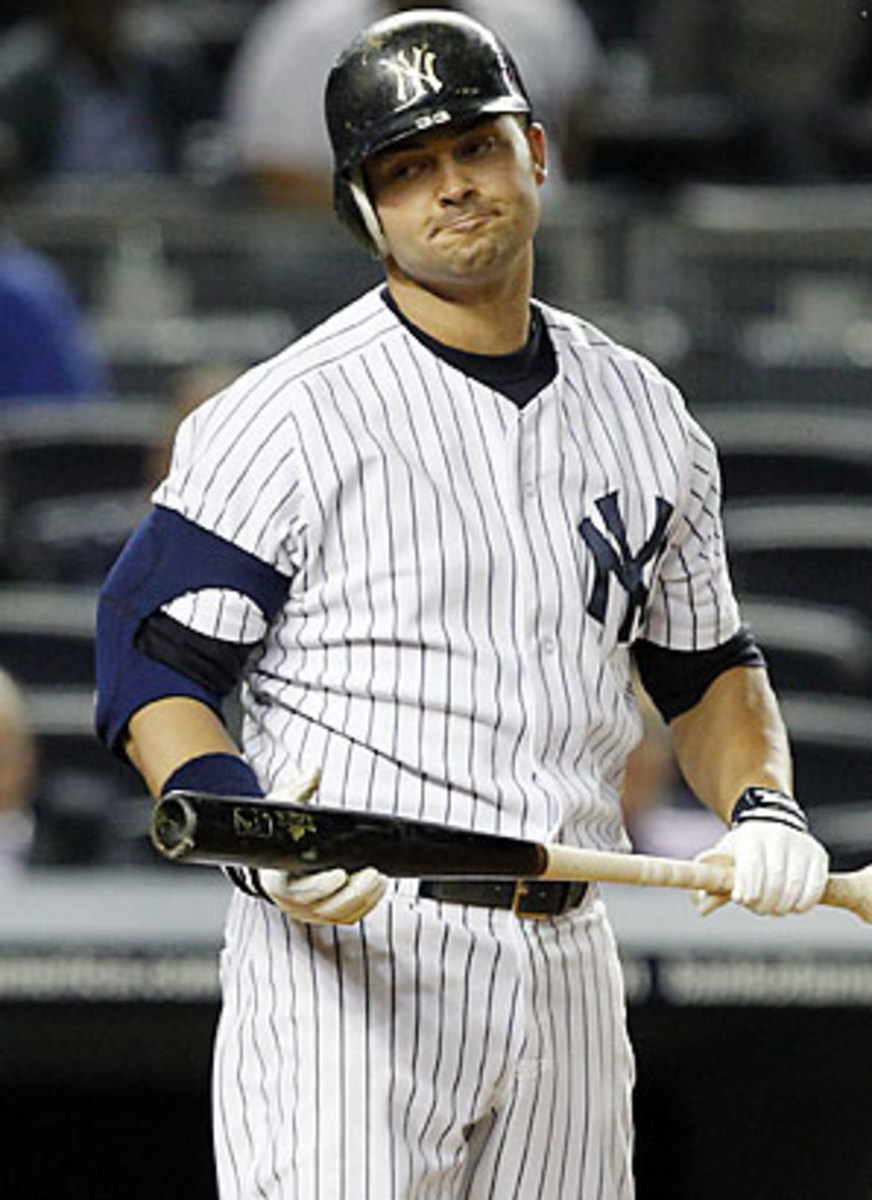Buy Low, Sell High: Yanks offense may offer Swisher path to rebound
There's a name for people who don't make trades during the year, but it's not fit to print on a family-friendly column. A healthy league is one with many trades, and all season long you can come here to get the kind of edge you need to get ahead ...
Nick Swisher, Yankees: Anyone expecting a repeat of his 2010 line was sadly mistaken. Last year will almost surely go down as Swisher's career year. His batting average on balls in play took a 60-point leap, making him a .288 hitter. But Swisher is actually hitting the ball just as well this year. His line drive rate is at a career-high 25.5 percent (it was 19.6 percent last year) and his strikeout rate is actually the lowest it's been since 2007 (24.4 percent). He should be hovering somewhere around .260, not .215. His power will come as well. Swisher has hit at least 21 home runs in each of his six previous big league seasons. He's only hit it over that thing that separates the fans from the players twice, but he's got a good 15 left in his bat. And he may be hitting .139 with runners in scoring position, but at least he'll be getting a lot of RBI opportunities. Go ahead and grab him for dirt cheap.
Daniel Hudson, Diamondbacks: This time last year, Hudson was toiling in the White Sox farm system, the odd man out in their deep rotation. It wasn't until he arrived in Arizona at the trade deadline that he really took off, going 7-1 with a 1.69 ERA for the D'backs. He didn't pitch 1.69-ERA well a year ago, but he did have a 70-to-16 K-to-BB ratio along the way while posting a solid groundball rate. So far in 2011, he's striking out nearly a batter an inning (54 in 58 IPs) while keeping his walk rate in check (about one more walk per 9 innings than he had with Arizona a year ago). Some weak defensive support and bad luck have led to a .335 opponent BABIP, and a 4.03 ERA. Expect that to come down to the low- to mid-threes from here on in. With even average run support, he'll be a top 20 fantasy starter from here on in.
Gaby Sanchez, Marlins: In all walks of life, people improve in things between the ages of 26 and 27. So it's not a shock that Sanchez has gone from solid hitter to good hitter. But what he's not is the MVP-caliber hitter his quarter-mark numbers would indicate. Through 41 games, Sanchez is sitting on a .325 average with seven homers, 26 RBIs and 25 runs. The slight power surge I can buy. He had 19 home runs among his 59 extra-base hits in '10, so a jump to the 25-HR range shouldn't make you spit green tea all over your monitor. What I'm not buying is that batting average. Sanchez has a .352 batting average on balls in play. His BABIP was .299 last year, and the best in his pro career was a .337 in Double-A three years ago. His line drive percentage is pretty much the same as last year (17.1 percent in 2010, 17.4 percent in '11). His strikeout rate has barely improved (17.7 percent in '10, 16.6 percent in '11) and while he's hitting the ball on the ground more, he doesn't have the speed to take advantage. In reality, even with steady improvements, Sanchez should be hitting 30-40 points lower right about now. You'd be smart to move him when you still have the chance.
Alexi Ogando, Rangers: I've come to peace with the fact that I cut ties with Ogando in March after the Rangers took him out of the closer mix. Through help from my therapist and a few good cries, I've learned to forgive Nolan Ryan, Jon Daniels, Ron Washington and the rest of the Texas Rangers organization. It also helps to know that there's no way Ogando's 2.13 ERA is sustainable. The Rangers might have an elite defense, and they might be as good as any organization in teaching their pitchers to pitch to contact, but a .196 opponent BABIP is the stuff of science fiction. Ray Bradbury should write a short story about it. And as good as the Rangers' bullpen is, a 90.9 percent strand rate isn't going to happen either. Ogando's strikeout rate is good-not-great, and he could very well post an ERA nearly two runs higher from here on in. And then there's the fact that he's 30 or so innings short of matching his '10 total. His excellent walk rate will help him maintain a solid WHIP, but Ogando is shaping up to be a middling option from here on in.
Do you have questions? Concerns? Unflinching boredom? Following me on Twitter (GGramling_SI) won't help, but you should do it anyway.






































